🍂🍁🌄
🍂🍁🌄
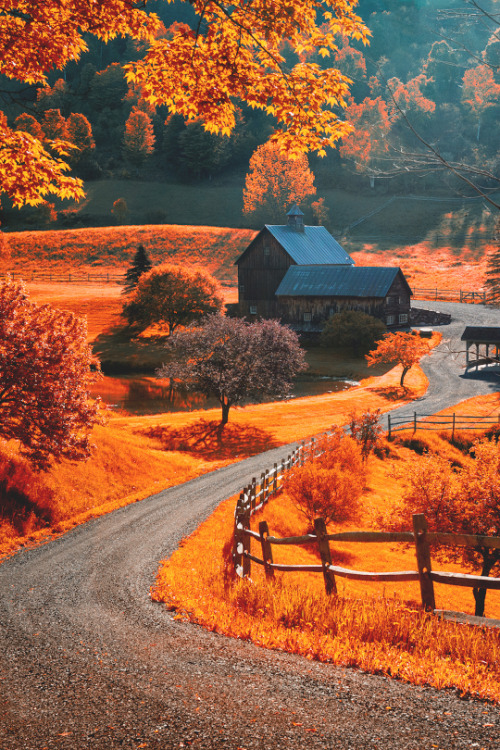
More Posts from Monstrous-mind and Others
🐈🌃🌌

🍁🍂🎃🍂🍁

Calling all active fall blogs in spring 2020!
Please reblog! My dash needs more autumn on it 🍂
Black Holes Dine on Stellar Treats!

See that tiny blob of light, circled in red? Doesn’t look like much, does it? But that blob represents a feast big enough to feed a black hole around 30 million times the mass of our Sun! Scientists call these kinds of stellar meals tidal disruption events, and they’re some of the most dramatic happenings in the cosmos.

Sometimes, an unlucky star strays too close to a black hole. The black hole’s gravity pulls on the star, causing it to stretch in one direction and squeeze in another. Then the star pulls apart into a stream of gas. This is a tidal disruption event. (If you’re worried about this happening to our Sun – don’t. The nearest black hole we know about is over 1,000 light-years away. And black holes aren’t wild space vacuums. They don’t go zipping around sucking up random stars and planets. So we’re pretty safe from tidal disruption events!)

The trailing part of the stream gets flung out of the system. The rest of the gas loops back around the black hole, forming a disk. The material circling in the disk slowly drifts inward toward the black hole’s event horizon, the point at which nothing – not even light – can escape. The black hole consumes the gas and dust in its disk over many years.

Sometimes the black hole only munches on a passing star – we call this a partial tidal disruption event. The star loses some of its gas, but its own gravity pulls it back into shape before it passes the black hole again. Eventually, the black hole will have nibbled away enough material that the star can’t reform and gets destroyed.

We study tidal disruptions, both the full feasts and the partial snacks, using many kinds of telescopes. Usually, these events are spotted by ground-based telescopes like the Zwicky Transient Facility and the All-Sky Automated Survey for Supernovae network.

They alert other ground- and space-based telescopes – like our Neil Gehrels Swift Observatory (illustrated above) and the European Space Agency’s XMM-Newton – to follow up and collect more data using different wavelengths, from visible light to X-rays. Even our planet-hunting Transiting Exoplanet Survey Satellite has observed a few of these destructive wonders!
We’re also studying disruptions using multimessenger astronomy, where scientists use the information carried by light, particles, and space-time ripples to learn more about cosmic objects and occurrences.

But tidal disruptions are super rare. They only happen once every 10,000 to 100,000 years in a galaxy the size of our own Milky Way. Astronomers have only observed a few dozen events so far. By comparison, supernovae – the explosive deaths of stars – happen every 100 years or so in a galaxy like ours.
That’s why scientists make their own tidal disruptions using supercomputers, like the ones shown in the video here. Supercomputers allow researchers to build realistic models of stars. They can also include all of the physical effects they’d experience whipping ‘round a black hole, even those from Einstein’s theory of general relativity. They can alter features like how close the stars get and how massive the black holes are to see how it affects what happens to the stars. These simulations will help astronomers build better pictures of the events they observe in the night sky.
Keep up with what’s happening in the universe and how we study it by following NASA Universe on Twitter and Facebook.
Make sure to follow us on Tumblr for your regular dose of space!
🛫🔭🌌
10 Amazing Space Discoveries by the World’s Largest Flying Observatory

On the night of May 26, 2010, the Stratospheric Observatory for Infrared Astronomy, or SOFIA, the world’s largest flying observatory, first peered into the cosmos. Its mission: to study celestial objects and astronomical phenomena with infrared light. Many objects in space emit almost all their energy at infrared wavelengths. Often, they are invisible when observed in ordinary, visible light. Over the last decade, the aircraft’s 106-inch telescope has been used to study black holes, planets, galaxies, star-forming nebulas and more! The observations have led to major breakthroughs in astronomy, revolutionizing our understanding of the solar system and beyond. To celebrate its 10 years of exploration, here’s a look at the top 10 discoveries made by our telescope on a plane:
The Universe’s First Type of Molecule

Scientists believe that around 100,000 years after the big bang, helium and hydrogen combined to make a molecule called helium hydride. Its recent discovery confirms a key part of our basic understanding of the early universe.
A New View of the Milky Way

More than a pretty picture, this panorama of cosmic scale reveals details that can help explain how massive stars are born and what’s feeding our Milky Way galaxy’s supermassive black hole.
When Planets Collide

A double-star system that is more than 300 light-years away likely had an extreme collision between two of its rocky planets. A similar event in our own solar system may have formed our Moon.
How A Black Hole Feasts
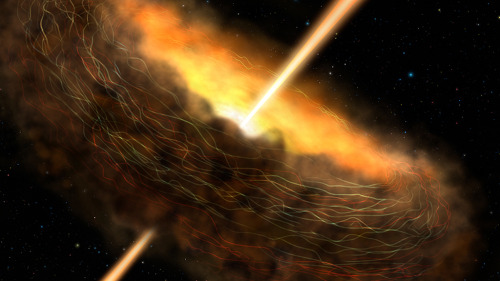
Fear not, the dark, my friend. And let the feast begin! Magnetic fields in the Cygnus A galaxy are trapping material where it is close enough to be devoured by a hungry black hole.
Somewhere Like Home

The planetary system around Epsilon Eridani, a star located about 10 light-years away, has an architecture remarkably similar to our solar system. What’s more, its central star is a younger, fainter version of our Sun.
A Quiet Place

Black holes in many galaxies are actively consuming material, but our Milky Way galaxy’s central black hole is relatively quiet. Observations show magnetic fields may be directing material around, not into, the belly of the beast.
The Great Escape

Ever wonder how material leaves a galaxy? The wind flowing from the center of the Cigar Galaxy is so strong it’s pulling a magnetic field — and the mass of 50 to 60 million Suns — with it.
Exploding Star, New Worlds

What happens when a star goes boom? It turns out that supernova explosions can produce a substantial amount of material from which planets like Earth can form.
Stellar Sibling Rivalry

They say siblings need time and space to grow, but here’s one that really needs some room. A newborn star in the Orion Nebula is clearing a bubble of space around it, preventing any new luminous family members from forming nearby.
Clues to Life’s Building Blocks

Radiation from stars is making organic molecules in nebula NGC 7023, also known as the Iris Nebula, larger and more complex. The growth of these molecules is one of the steps that could lead to the emergence of life under the right circumstances.
SOFIA is a modified Boeing 747SP aircraft that allows astronomers to study the solar system and beyond in ways that are not possible with ground-based telescopes. Find out more about the mission at www.nasa.gov/SOFIA.
Make sure to follow us on Tumblr for your regular dose of space: http://nasa.tumblr.com
Be Glad You Don’t Have to Dust in Space!
Throw open the windows and break out the feather duster, because spring is here and it’s time to do a little cleaning! Fortunately, no one has to tidy up the dust in space — because there’s a lot of it — around 100 tons rain down on Earth alone every day! And there’s even more swirling around the solar system, our Milky Way galaxy, other galaxies and the spaces in between.

By studying the contents of the dust in your house — which can include skin cells, pet fur, furniture fibers, pollen, concrete particles and more — scientists learn a lot about your environment. In the same way, scientists can learn a lot by looking at space dust. Also called cosmic dust, a fleck of space dust is usually smaller than a grain of sand and is made of rock, ice, minerals or organic compounds. Scientists can study cosmic dust to learn about how it formed and how the universe recycles material.

“We are made of star-stuff,” Carl Sagan famously said. And it’s true! When a star dies, it sheds clouds of gas in strong stellar winds or in an explosion called a supernova. As the gas cools, minerals condense. Recent observations by our SOFIA mission suggest that in the wake of a supernova shockwave, dust may form more rapidly than scientists previously thought. These clouds of gas and dust created by the deaths of stars can sprawl across light-years and form new stars — like the Horsehead Nebula pictured above. Disks of dust and gas form around new stars and produce planets, moons, asteroids and comets. Here on Earth, some of that space dust eventually became included in living organisms — like us! Billions of years from now, our Sun will die too. The gas and dust it sheds will be recycled into new stars and planets and so on and so forth, in perpetuity!

Astronomers originally thought dust was a nuisance that got in the way of seeing the objects it surrounded. Dust scatters and absorbs light from stars and emits heat as infrared light. Once we started using infrared telescopes, we began to understand just how important dust is in the universe and how beautiful it can be. The picture of the Andromeda galaxy above was taken in the infrared by our Spitzer Space Telescope and reveals detailed spirals of dust that we can’t see in an optical image.

We also see plenty of dust right here in our solar system. Saturn’s rings are made of mostly ice particles and some dust, but scientists think that dust from meteorites may be darkening the rings over time. Jupiter also has faint dusty rings, although they’re hard to see — Voyager 1 only discovered them when it saw them backlit by the Sun. Astronomers think the rings formed when meteorite impacts on Jupiter’s moons released dust into orbit. The Juno spacecraft took the above picture in 2016 from inside the rings, looking out at the bright star Betelgeuse.

Copyright Josh Calcino, used with permission
And some space dust you can see from right here on Earth! In spring or autumn, right before sunrise or after sunset, you may be able to catch a glimpse of a hazy cone of light above the horizon created when the Sun’s rays are scattered by dust in the inner solar system. You can see an example in the image above, extending from above the tree on the horizon toward a spectacular view of the Milky Way. This phenomenon is called zodiacal light — and the dust that’s reflecting the sunlight probably comes from icy comets. Those comets were created by the same dusty disk that that formed our planets and eventually you and the dust under your couch!
Make sure to follow us on Tumblr for your regular dose of space: http://nasa.tumblr.com





COSMOS: Possible Worlds 2020










Was Earth Born With Life On It?
“By finding graphite deposits in zircons that are 4.1 billion years old, graphite deposits that show this carbon-12 enhancement, we now have evidence that life on Earth goes back at least 90% of Earth’s history, and possibly even longer! After all, finding the remnants of organic matter in a certain location means the organic matter is at least as old as the location it’s buried in, but it could still be even older. This is so early that it might make you think that perhaps this life didn’t originate here on Earth, but that Earth was born with life. And this could really, truly be the case.”
How old is life on Earth? If all you had to go on was the fossil record, you’d run into severe trouble once you went back more than one or two billion years, as all your rock would have metamorphosed, making examination and identification of fossils impossible. But recently, we’ve discovered another method: to measure the isotopic content of carbon deposits in ancient rock formations. The carbon-12 to carbon-13 ratio is a surefire signature of life, and tells us that life on Earth goes back at least 4.1 billion years: 90% of the age of our planet. Could this be the hint we’ve needed to conclude that life on Earth actually predates the Earth itself? It’s not quite certain, but the beauty of science is we can always test it and find out! Here’s how.
🍁🍂🎃🍂🍁



Autumn 2024 is almost here!
🍁🍂🎃🍂🍁

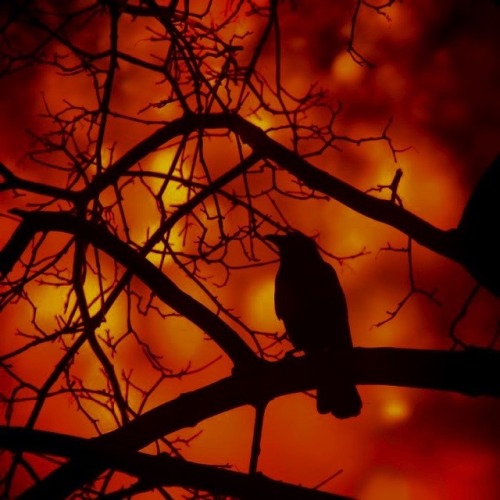

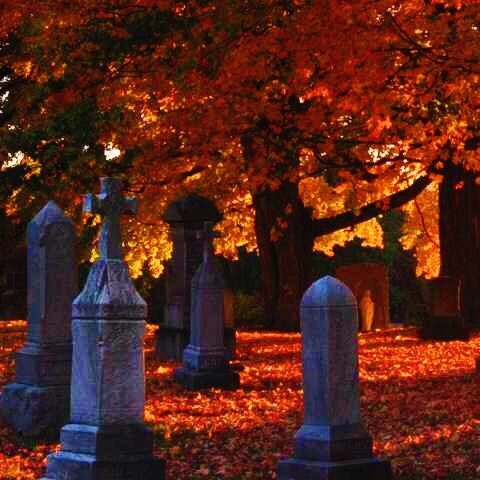

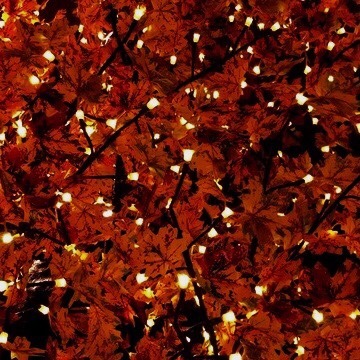



Halloween 🎃
🔭🌌
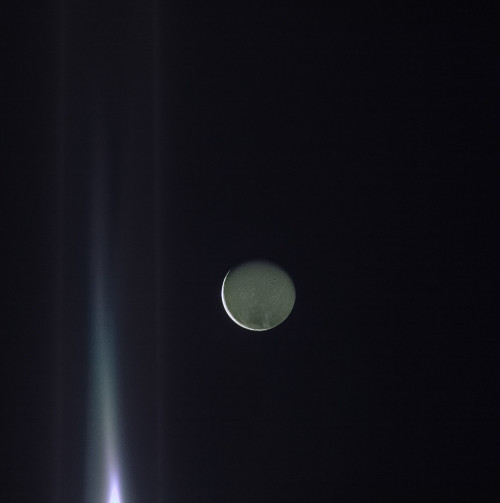

Dione (moon of Saturn) 2005 and 2015
Credit: NASA/JPL-Caltech/SSI/Kevin M. Gill
-
 nostalgichalloween reblogged this · 1 month ago
nostalgichalloween reblogged this · 1 month ago -
 docwink liked this · 2 months ago
docwink liked this · 2 months ago -
 b8o0s4s reblogged this · 4 months ago
b8o0s4s reblogged this · 4 months ago -
 b8o0s4s liked this · 4 months ago
b8o0s4s liked this · 4 months ago -
 annaw8m1o liked this · 6 months ago
annaw8m1o liked this · 6 months ago -
 occultbeast reblogged this · 7 months ago
occultbeast reblogged this · 7 months ago -
 masturdating reblogged this · 8 months ago
masturdating reblogged this · 8 months ago -
 pozendonetwo liked this · 8 months ago
pozendonetwo liked this · 8 months ago -
 madmax76d reblogged this · 8 months ago
madmax76d reblogged this · 8 months ago -
 madmax76d liked this · 8 months ago
madmax76d liked this · 8 months ago -
 photoboybg1969 reblogged this · 8 months ago
photoboybg1969 reblogged this · 8 months ago -
 photoboybg1969 liked this · 8 months ago
photoboybg1969 liked this · 8 months ago -
 wildonebooks reblogged this · 9 months ago
wildonebooks reblogged this · 9 months ago -
 children-of-the-neon-god liked this · 10 months ago
children-of-the-neon-god liked this · 10 months ago -
 nerdsgaysandarcherybabes liked this · 1 year ago
nerdsgaysandarcherybabes liked this · 1 year ago -
 thinredline110 liked this · 1 year ago
thinredline110 liked this · 1 year ago -
 francinesoleil liked this · 1 year ago
francinesoleil liked this · 1 year ago -
 littlethingssession liked this · 1 year ago
littlethingssession liked this · 1 year ago -
 vacanzeaicaraibi reblogged this · 1 year ago
vacanzeaicaraibi reblogged this · 1 year ago -
 somethinginthewoods reblogged this · 1 year ago
somethinginthewoods reblogged this · 1 year ago -
 nonudityshesaid liked this · 1 year ago
nonudityshesaid liked this · 1 year ago -
 james-alan reblogged this · 1 year ago
james-alan reblogged this · 1 year ago -
 shaun-d-wane-art liked this · 1 year ago
shaun-d-wane-art liked this · 1 year ago -
 i-am-beathach reblogged this · 1 year ago
i-am-beathach reblogged this · 1 year ago -
 i-am-beathach liked this · 1 year ago
i-am-beathach liked this · 1 year ago -
 garyhallendorff liked this · 1 year ago
garyhallendorff liked this · 1 year ago -
 ohiolatex liked this · 1 year ago
ohiolatex liked this · 1 year ago -
 holliswrites reblogged this · 1 year ago
holliswrites reblogged this · 1 year ago -
 ahronazul liked this · 1 year ago
ahronazul liked this · 1 year ago -
 importantmentalityphilosopher liked this · 1 year ago
importantmentalityphilosopher liked this · 1 year ago -
 ancabelloca reblogged this · 1 year ago
ancabelloca reblogged this · 1 year ago -
 celticwarriorcj liked this · 1 year ago
celticwarriorcj liked this · 1 year ago -
 plac-grocka reblogged this · 1 year ago
plac-grocka reblogged this · 1 year ago -
 rsb501 reblogged this · 1 year ago
rsb501 reblogged this · 1 year ago -
 rsb501 liked this · 1 year ago
rsb501 liked this · 1 year ago -
 somethingawesome liked this · 1 year ago
somethingawesome liked this · 1 year ago -
 sizzlingsoulclodathlete liked this · 1 year ago
sizzlingsoulclodathlete liked this · 1 year ago -
 jazz-improvisation liked this · 1 year ago
jazz-improvisation liked this · 1 year ago
My ambition is handicapped by laziness. -C. Bukowski Me gustan las personas desesperadas con mentes rotas y destinos rotos. Están llenos de sorpresas y explosiones. -C. Bukowski. I love cats. Born in the early 80's, raised in the 90's. I like Nature, Autumn, books, landscapes, cold days, cloudy Windy days, space, Science, Paleontology, Biology, Astronomy, History, Social Sciences, Drawing, spending the night watching at the stars, Rick & Morty. I'm a lazy ass.
222 posts